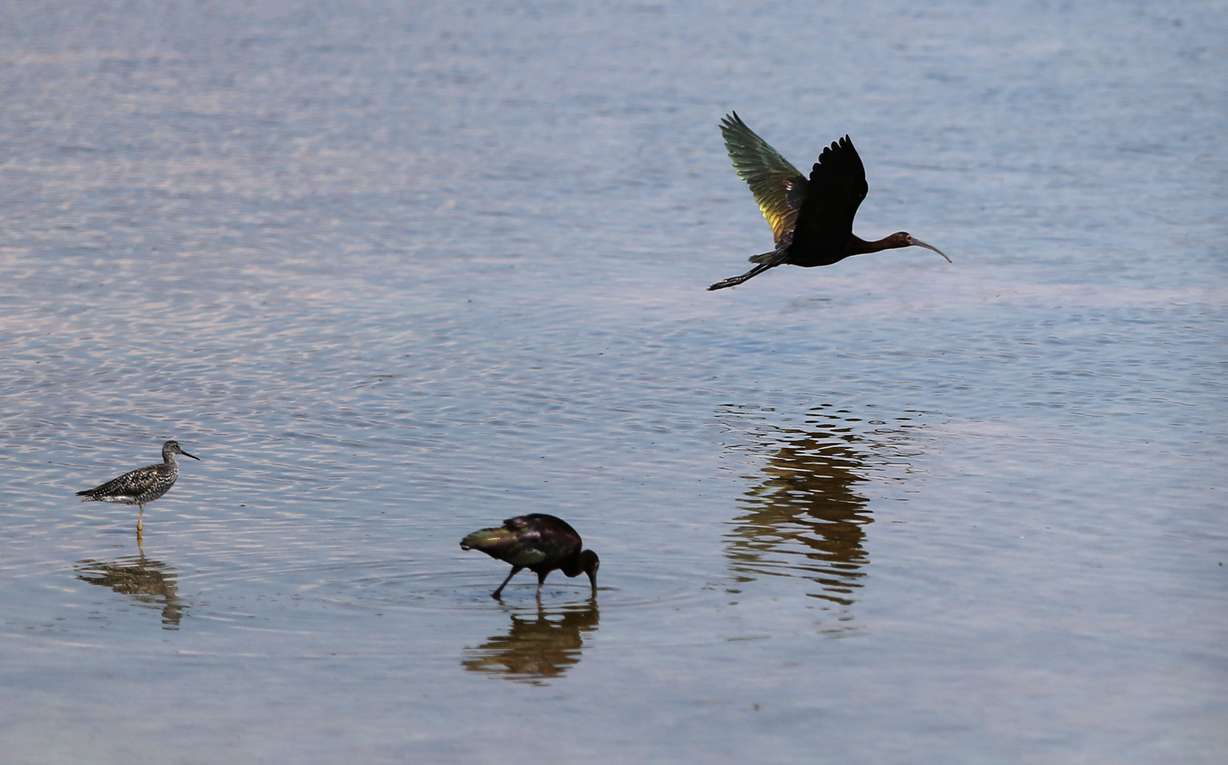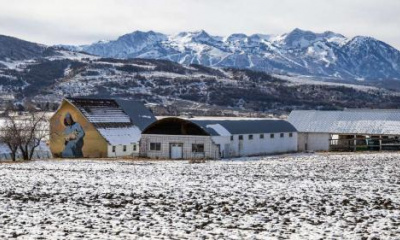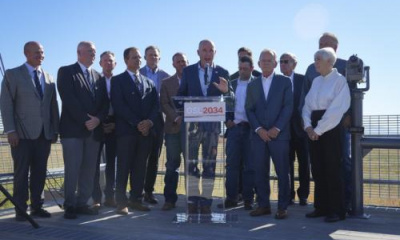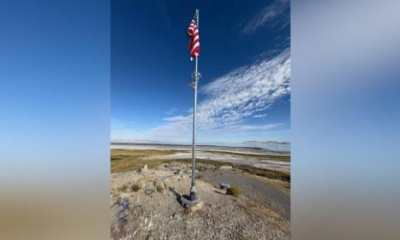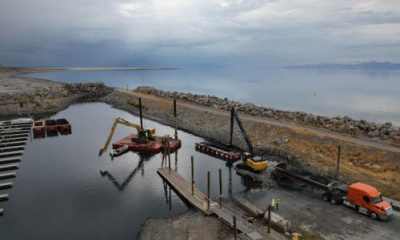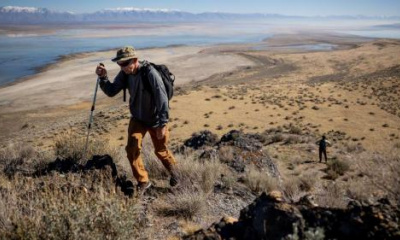OGDEN — The dike system at Ogden Bay Waterfowl Management Area is vital for controlling the water that keeps it an important management area for the millions of birds that flock there — or other areas by the Great Salt Lake — every year.
However, it's eroding with time and now at risk of failing. If it does, that's bad news for keeping it the sanctuary that it is, says Chris Bonsignore, the manager of conservation programs for the Washington-based conservation group Ducks Unlimited.
"That would be catastrophic," he says. "Essentially, if that dike failed, (state land managers) would no longer be able to manage water and provide water for that really productive wetland habitat that's on the (Waterfowl Management Area)."
That's why he's relieved for a round of funding from the federal government that completes funding for a Ducks Unlimited-led project to fortify the dike. State officials have already conducted the groundwork around this dike to prepare for the upcoming work to enhance it so it doesn't fail in the future.
The U.S. Department of Interior approved $1 million in grant spending for the Lower Bear River/Great Salt Lake Project Wednesday via the Migratory Bird Conservation Commission. It completes the funds needed to make improvements to the vital Bear River and Ogden bays because Utah agencies and private donors already raised a little more than $2 million.
The money won't just go into fixing the important Ogden Bay Waterfowl Management Area dike, but it also will go into what Bonsignore calls a "suite of projects" around the Ogden and Bear River bays by the Great Salt Lake's northeast edge to help it remain an important area for birds.
Other targeted areas include Fremont Island, Howard Slough Waterfowl Management Area and a pair of private properties closer to the Bear River Bay and the Bear River Migratory Bird Refuge. Planning for all five areas are just beginning and it's expected that all of the work will be completed by 2025.
"This is essentially the ecosystem restoration that will enhance the productivity of these wetlands that will benefit a whole slew of species," Bonsignore said. "But there will also be water quality improvements, as well as improvements for water availability related to agricultural water efficiency."
Another one of the projects won't be as noticeable to people as the Ogden Bay waterfowl management area, but will be just as impactful. Since water is uncontrolled by the Bear River floodplain, there's a project to build small 3- or 4-foot dikes for flooding in the areas closest to the Bear River Bay.
It will allow for the replication of natural disturbance events and other natural processes that aren't happening now. This is expected to help control phragmites and other invasive plants from dominating a wetland while also controlling water levels a little bit easier, according to project leaders.
At the same time, Bonsignore said a private farmer in the area is volunteering equipment and labor to install a new pipeline and replace an old ditch to improve irrigation on the farm, while also sending additional water into the bay.
How can we all work together and ultimately benefit the thing that we cherish, but maybe do it in a number of different ways? What we're doing is just one way we can contribute.
–Chris Bonsignore, manager of conservation programs for Ducks Unlimited
The collective projects are expected to benefit many bird species, but especially the ones that use the Great Salt Lake the most, per the Migratory Bird Conservation Commission document. About three-fourths of the continental tundra swan, over half of the western snowy plover and a quarter of the northern pintail populations use this area of the lake.
It's also the world's largest breeding population area for Utah's state bird, the California gull, as well as other bird species like the white-faced ibis. But the Great Salt Lake is a haven for all sorts of bird species with an estimated 10 million birds using the lake every year, either as their permanent home or as a stop during their annual migration.
In all, the Department of Interior approved about $95 million in grant funds for wetlands improvements across the country, including the purpose of new wildlife bird refuges. Department of Interior Secretary Deb Haaland said in a statement that the investments "will help ensure that birds continue to flourish for the next hundred years and beyond."
Though the Lower Bear River/Great Salt Lake Project was the only Utah project to receive money, the department has already approved close to $35 million for various conservation projects in Utah this year. Bonsignore knows the $3 million suite of projects isn't the last work to be done to protect the Great Salt Lake's valuable wetlands, either.
Yet, as the lake recedes — which it is projected to do again by about 2 feet this year — it's become increasingly difficult to really know how much work or money is needed to save the wetlands.
"That's a question that I think a lot of us would love to be able to answer," he concedes. "I think that's a question that's sort of larger than all of us right now."
With the Lower Bear River/Great Salt Lake Project, and also millions in new state funds directed to the lake this year, there is a shift in how that question is addressed, though. Ducks Unlimited is expected to reveal next month a bunch of other desired projects specifically for the Great Salt Lake, joining combined efforts from other conservation groups, state and federal agencies, private corporations and farmers all seeking to find ways to protect the wetlands.
The Audubon Society announced a public-private collaboration to acquire water rights last fall that allows for water to flow into Farmington Bay instead of irrigation systems for the next decade, as another example of groups working together for the Great Salt Lake.
This approach to the Great Salt Lake is something that Bonsignore expects in the future.
"It's looking for ways to collaborate," he says. "How can we all work together and ultimately benefit the thing that we cherish, but maybe do it in a number of different ways? What we're doing is just one way we can contribute."

